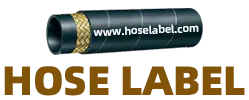-
What are the characteristics of the production process of vulcanized bar transfer labels?2025-04-29The production process of vulcanized bar transfer labels is based on usage requirements, such as high temperature resistance, friction resistance, good adhesion and long-lasting and clear marking effect. The following introduces the characteristics of vulcanized bar transfer label production process: 1. In order to ensure that the vulcanized bar transfer labels maintain stable performance under different environments, you must choose...
-
How to choose rubber hose ribbon manufacturer for beginners: a must-read guide for purchasing managers, bosses and technicians2025-04-28Looking for a high-quality ribbon manufacturer for rubber tube factory? This article provides purchasing managers, bosses and technicians with practical strategies for novices to choose hose ribbon manufacturers, helping you to select reliable suppliers and improve the quality of rubber pipes.
-
Hose Vulcanization Label Buyer's Guide: 3 Steps to the best Rubber Label2025-04-24Hose vulcanization labels are important for identifying hose information and ensuring safe production. Consider factors such as durability, accuracy, and cost-effectiveness when selecting the right labels.
-
what is a rubber transfer label?2025-03-17rubber transfer labels, sometimes called thermal transfer labels or thermal transfer labels, are a special type of label technology that is mainly used to provide long-lasting, durable markings on various surfaces.
-
How to ensure that the rubber hose label is color-coded correctly?2025-03-07ensuring that the rubber hose label is correctly color-coded is essential for safe use and distinction between different types of hoses. here are some steps and suggestions to help you ensure the accuracy of color coding: 1. first determine and follow international or national standards that apply to your product. for example, iso 554 (rubber and plastic hoses and soft...
-
key points for making rubber hose labels2025-02-10when making rubber hose labels, the following key points need to be considered to ensure that the label can provide accurate information and meet relevant standards and regulations: 1. clear identification: the type, size, and working pressure of the hose should be clearly marked on the label. , test pressure and other basic information. this helps users quickly identify soft...
-
what conditions must rubber hose labeling materials meet?2025-01-20since the vulcanization process of rubber hose labels involves high temperature and high pressure environments, ordinary label materials may not be able to withstand such conditions. therefore, it is crucial to choose label materials suitable for the vulcanization process: 1. high temperature resistance: able to withstand high temperatures during the vulcanization process without deformation or damage. 2. resistance to chemical corrosion: resistant to vulcanization...
-
How to customize hose transfer labels?2025-01-17question: how to customize hose labels? answer: 1. re-create the vector design draft according to the design draft or requirements provided by the customer 2. send the design draft to the customer for confirmation 3. make a quotation after the sample is confirmed 4. after the customer confirms the quotation, provide proofing 5. if the customer does not need it after proofing, you can sign a formal contract...
-
What are the rubber hose labels processes?2025-01-02what are the rubber hose labels processes? according to the purpose, product characteristics and relevant regulatory requirements of the rubber hose, design the label content, such as product name, specification model, manufacturer, production date, shelf life, instructions for use, warning signs, etc. ensure label content is accurate, clear, complete, and use appropriate printing...
-
What information does a rubber hose label include?2024-12-31rubber hose labels should include but are not limited to the following information: 1. manufacturer’s name or trademark; 2. product model or serial number; 3. dimensions (inner diameter, outer diameter, length); 4. maximum working pressure; 5. applicable medium (such as hydraulic oil, air, etc.); 6. temperature range; 7. certification marks (such as iso, sae, etc.)...



